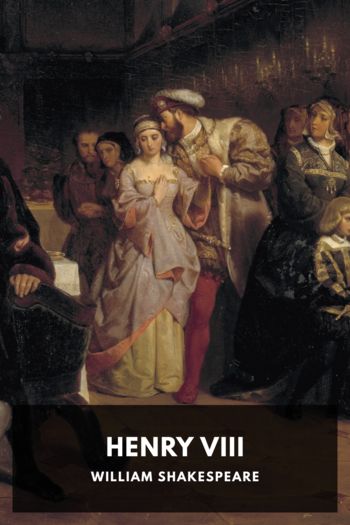Mutual Aid by Peter Kropotkin (ebook reader play store .txt) 📕

Description
Peter Kropotkin initially published the chapters of Mutual Aid as individual essays in the intellectual periodical The Nineteenth Century over the course of six years. In 1902 the essays were published as a book.
In it, Kropotkin explores the role of mutually-beneficial cooperation across both animal and human societies. He begins by outlining how animals, both within and across species, thrive not through individual fitness, but rather through mutual cooperation. He then extends the breadth of his study to ancient human societies across generations and nations, until arriving at modern society, which he suggests has largely dispensed with the ancient benefits of mutual aid in favor of private property, capitalism, and social Darwinism.
Though more of a philosophical work than a scientific work, many of Kropotkin’s observations of the animal kingdom are considered to be scientifically accurate today, with Douglas H. Boucher calling Mutual Aid a precursor to the theory of biological altruism.
As a philosophical work Mutual Aid, along with his other work The Conquest of Bread, is recognized as a foundational text of the anarcho-communist political philosophy.
Read free book «Mutual Aid by Peter Kropotkin (ebook reader play store .txt) 📕» - read online or download for free at americanlibrarybooks.com
- Author: Peter Kropotkin
Read book online «Mutual Aid by Peter Kropotkin (ebook reader play store .txt) 📕». Author - Peter Kropotkin
M. Kovalevsky, Modern Customs and Ancient Laws of Russia (Ilchester Lectures, London, 1891, Lecture 4). ↩
A considerable amount of research had to be done before this character of the so-called udyelnyi period was properly established by the works of Byelaeff (Tales from Russian History), Kostomaroff (The Beginnings of Autocracy in Russia), and especially Professor Sergievich (The Vyeche and the Prince). The English reader may find some information about this period in the just-named work of M. Kovalevsky, in Rambaud’s History of Russia, and, in a short summary, in the article “Russia” of the last edition of Chambers’s Encyclopaedia. ↩
Ferrari, Histoire des révolutions d’Italie, i, 257; Kallsen, Die deutschen Städte im Mittelalter, Bd. I (Halle, 1891). ↩
See the excellent remarks of Mr. G. L. Gomme as regards the folkmote of London (The Literature of Local Institutions, London, 1886, p. 76). It must, however, be remarked that in royal cities the folkmote never attained the independence which it assumed elsewhere. It is even certain that Moscow and Paris were chosen by the kings and the Church as the cradles of the future royal authority in the State, because they did not possess the tradition of folkmotes accustomed to act as sovereign in all matters. ↩
A. Luchaire, Les Communes françaises; also Kluckohn, Geschichte des Gottesfrieden, 1857. L. Sémichon (La paix et la trève de Dieu, 2 vols., Paris, 1869) has tried to represent the communal movement as issued from that institution. In reality, the treuga Dei, like the league started under Louis le Gros for the defence against both the robberies of the nobles and the Norman invasions, was a thoroughly popular movement. The only historian who mentions this last league—that is, Vitalis—describes it as a “popular community” (“Considérations sur l’histoire de France,” in vol. iv of Aug. Thierry’s Œuvres, Paris, 1868, p. 191 and note). ↩
Ferrari, i, 152, 263, etc. ↩
Perrens, Histoire de Florence, i, 188; Ferrari, Histoire des révolutions d’Italie, i, 283. ↩
Aug. Thierry, Essai sur l’histoire du Tiers État, Paris, 1875, p. 414, note. ↩
F. Rocquain, “La Renaissance au XIIe siècle,” in Études sur l’histoire de France, Paris, 1875, pp. 55–117. ↩
N. Kostomaroff, “The Rationalists of the Twelfth Century,” in his Monographies and Researches (Russian). ↩
Very interesting facts relative to the universality of guilds will be found in “Two Thousand Years of Guild Life,” by Rev. J. M. Lambert, Hull, 1891. On the Georgian amkari, see S. Eghiazarov, Gorodskiye Tsekhi (“Organization of Transcaucasian Amkari”), in Memoirs of the Caucasian Geographical Society, xiv, 2, 1891. ↩
J. D. Wunderer’s “Reisebericht” in Fichard’s Frankfurter Archiv, ii, 245; quoted by Janssen, Geschichte des deutschen Volkes, i, 355. ↩
Dr. Leonard Ennen, Der Dom zu Köln, Historische Einleitung, Köln, 1871, pp. 46, 50. ↩
See previous chapter. ↩
Kofod Ancher, Om gamle Danske Gilder og deres Undergang, Copenhagen, 1785. Statutes of a Knu guild. ↩
Upon the position of women in guilds, see Miss Toulmin Smith’s introductory remarks to the English Guilds of her father. One of the Cambridge statutes (p. 281) of the year 1503 is quite positive in the following sentence: “Thys statute is made by the comyne assent of all the bretherne and sisterne of alhallowe yelde.” ↩
In medieval times, only secret aggression was treated as a murder. Blood-revenge in broad daylight was justice; and slaying in a quarrel was not murder, once the aggressor showed his willingness to repent and to repair the wrong he had done. Deep traces of this distinction still exist in modern criminal law, especially in Russia. ↩
Kofod Ancher, Om gamle Danske Gilder og deres Undergang, Copenhagen, 1785. This old booklet contains much that has been lost sight of by later explorers. ↩
They played an important part in the revolts of the serfs, and were therefore prohibited several times in succession in the second half of the ninth century. Of course, the king’s prohibitions remained a dead letter. ↩
The medieval Italian painters were also organized in guilds, which became at a later epoch Academies of art. If the Italian art of those times is impressed





Comments (0)